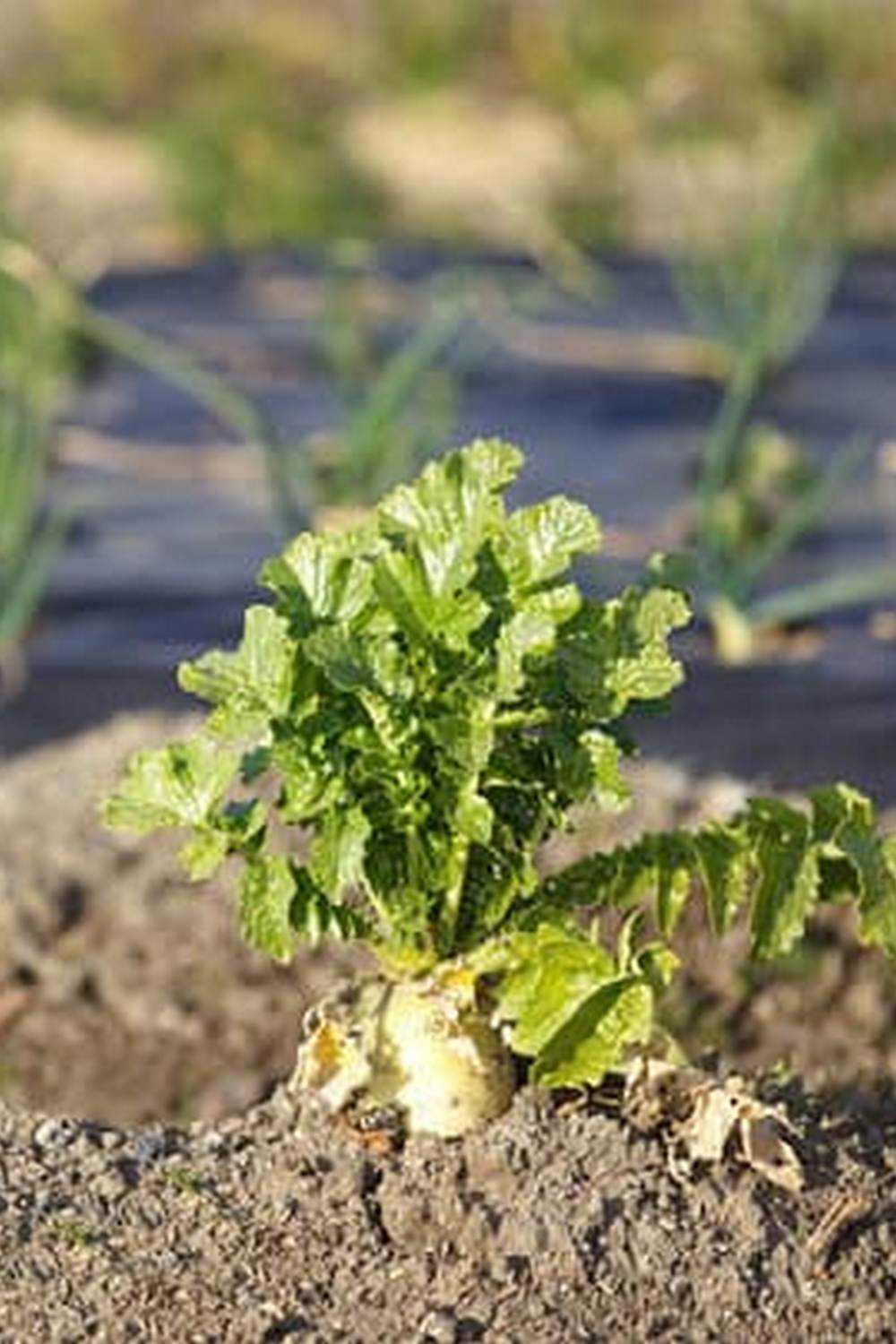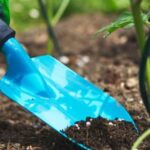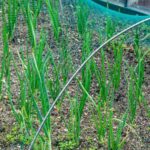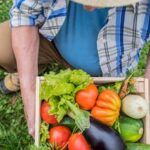Rainwater from roof safe for vegetable gardens is a topic of growing interest among gardeners and environmental enthusiasts. Water is essential for the growth and health of vegetable gardens, and using rainwater collected from the roof can have numerous benefits. This article will explore the advantages of utilizing rainwater for watering vegetable gardens, as well as provide guidance on collection, storage, filtering, and purification processes to ensure the water is safe for use.
In vegetable gardening, water plays a crucial role in nurturing plants and promoting healthy growth. Rainwater is often preferred over tap water due to its natural purity and lack of added chemicals such as chlorine or fluoride. Utilizing rainwater from the roof not only conserves resources but also provides an eco-friendly alternative to traditional watering methods.
The potential benefits of using rainwater for vegetable gardens are vast, but it is important to understand the best practices for collection, storage, filtration, and purification. By following guidelines and implementing proper techniques, gardeners can ensure that rainwater from the roof is clean and safe for their crops. In this article, we will delve into these processes to help gardeners make the most of this sustainable watering option.
The Benefits of Using Rainwater
Using rainwater from the roof for watering vegetable gardens offers numerous benefits that can contribute to the overall health and success of your plants. Here are some advantages of using rainwater for your vegetable garden:
- Natural Purity: Rainwater is naturally pure, devoid of the added chemicals and additives present in tap water or irrigation systems. This natural purity can benefit your vegetables by providing them with cleaner and more natural hydration, which can contribute to better growth and nutrient absorption.
- Sustainable Practice: Utilizing rainwater for watering your vegetable garden is an eco-friendly and sustainable practice. By collecting and using rainwater, you can reduce your reliance on conventional water sources, conserving resources while also minimizing the carbon footprint associated with water treatment and distribution processes.
- Cost-Effective Solution: Using rainwater from your roof eliminates the need to use treated water for gardening purposes, potentially leading to cost savings on utilities or irrigation expenses. In addition, rainwater collection systems are relatively low maintenance once installed, making it a cost-effective option in the long run.
In order to make the most of using rainwater for nurturing your vegetable garden, it’s important to understand how to properly collect and store this natural resource.
- Collection System: Installing a reliable system for collecting rainwater from the roof is crucial. This typically involves placing gutters and downspouts that direct the water into a storage container or barrel.
- Storage Practices: Proper storage practices are essential for ensuring that collected rainwater remains clean and safe for use in vegetable gardens. This may include covering storage containers with mesh screens to prevent debris from entering, as well as regularly cleaning out any accumulated sediment or organic matter.
- Prevent Contamination: It’s important to take measures to prevent contamination of collected rainwater from pollutants such as bird droppings or chemical runoff from roofing materials. Regular maintenance of collection systems is key in ensuring that the harvested rainwater remains suitable for use on vegetables.
By understanding these benefits and implementing best practices, you can effectively harness the power of rainwater from your roof to nurture healthy and thriving vegetable gardens without compromising safety or quality.
Collection and Storage
Collecting and storing rainwater from the roof is an excellent way to ensure a sustainable and efficient water source for vegetable gardens. This method not only conserves water but also reduces the reliance on traditional water sources, which may contain added chemicals or be subject to drought restrictions. However, it is important to follow specific guidelines to ensure that the collected rainwater is clean and safe for use in vegetable gardens.
When collecting rainwater from the roof, it is crucial to have a well-maintained gutter system to prevent any debris or pollutants from entering the water. Regular cleaning of the gutters can help minimize any potential contaminants that may affect the quality of the collected rainwater. Additionally, using a first flush diverter system can help divert the initial flow of water, which may contain more pollutants, away from storage tanks.
Proper storage of collected rainwater is essential for maintaining its quality and safety for vegetable use. It is recommended to use a covered storage container, such as a rain barrel or tank, to prevent any external contaminants from entering the water. The storage container should also be made of food-grade material to avoid leaching of harmful chemicals into the rainwater. Regular maintenance, such as cleaning and inspecting for leaks, is necessary to ensure the integrity of the stored rainwater.
Applying these best practices for collecting and storing rainwater from the roof will help ensure that the water remains clean and safe for use in vegetable gardens. By following these guidelines, gardeners can confidently utilize this natural resource as an eco-friendly and cost-effective watering solution.
| Benefits | Details |
|---|---|
| Natural Purity | Rainwater is free from added chemicals. |
| Sustainability | Reduces reliance on traditional water sources. |
| Eco-Friendly | Conserves water and minimizes environmental impact. |
Filtering and Purification
When it comes to using rainwater from the roof for vegetable gardens, filtering and purification are crucial steps to ensure the water is safe for use. While rainwater is generally pure as it falls from the sky, it can collect contaminants as it runs off the roof and into collection barrels or tanks. Therefore, proper filtration and purification are necessary to remove any potential pollutants before using the water in your vegetable garden.
Here are some important considerations to keep in mind when filtering and purifying rainwater for vegetable gardens:
- Use a first-flush diverter: This device is designed to divert the initial flow of rainwater away from the collection system, which helps remove debris, bird droppings, and other contaminants that may have accumulated on the roof.
- Install a filter system: A good filter system will remove sediment, debris, and other impurities from the collected rainwater. There are various types of filters available, such as mesh screens, cartridge filters, and UV sterilization systems.
- Consider adding a purification method: In addition to filtration, consider using a purification method such as chlorination or UV treatment to further eliminate any remaining bacteria or pathogens in the rainwater.
By taking these steps to filter and purify rainwater from your roof before using it in your vegetable garden, you can ensure that your plants receive clean and safe water without harmful contaminants. This not only promotes healthier growth for your vegetables but also contributes to sustainable gardening practices that conserve valuable freshwater resources.
It’s important to note that regular maintenance of the filtration and purification systems is essential to ensure their effectiveness. Periodically clean or replace filters as needed, test water quality regularly, and monitor any changes in the performance of your rainwater collection setup. By staying proactive in maintaining clean rainwater for your vegetable garden, you can reap the benefits of using this natural resource while minimizing potential risks associated with contamination.
Potential Risks
When using rainwater from the roof for vegetable gardens, it is important to consider potential risks associated with this practice. One of the main concerns is contamination from roofing materials, which can leach chemicals and other substances into the collected rainwater. Additionally, pollutants in the atmosphere, such as dust, pollen, and air pollutants, can also affect the quality of the rainwater and potentially impact the health of your vegetable garden.
To address these potential risks, it is essential to take proactive measures to ensure that the rainwater collected from the roof is safe for use in vegetable gardens. One effective way to mitigate contamination from roofing materials is by installing a first flush diverter system. This system diverts the initial flow of rainwater away from the collection tank, preventing any debris or contaminants that may have accumulated on the roof’s surface from entering the storage tank.
In addition to using a first flush diverter system, it is recommended to install a filtration system to further purify the rainwater before using it in your vegetable garden. This can help remove any remaining contaminants and improve the overall quality of the water. Regular maintenance of both the collection system and filtration system will also contribute to ensuring that the rainwater remains safe for vegetable use.
| Risks | Measures |
|---|---|
| Contamination from roofing materials | Install a first flush diverter system |
| Pollutants in atmosphere | Use filtration system and regular maintenance |
Best Practices for Using Rainwater
When it comes to using rainwater from the roof for watering vegetable gardens, there are several best practices that can help ensure the water is used effectively and safely. By following some simple guidelines, gardeners can make the most of this natural resource while minimizing any potential risks.
Proper Collection and Storage
One of the key best practices for using rainwater from the roof is to ensure proper collection and storage. This includes installing a gutter system to direct rainwater from the roof into a designated storage container, such as a rain barrel or tank. It’s important to regularly clean and maintain these containers to prevent the buildup of debris or algae, as well as to cover them to keep out insects and other contaminants.
Filtering and Purification
Before using rainwater from the roof for vegetable gardens, it’s essential to filter and purify the water to remove any potential contaminants. This can be achieved through the use of a fine mesh filter to remove debris, as well as a UV sterilizer or chlorine treatment to eliminate bacteria and other microorganisms. Additionally, allowing the water to settle before use can help separate out any sediments that may have accumulated during collection.
Application Practices
When applying rainwater from the roof to vegetable gardens, it’s important to do so in a way that promotes efficient use and minimizes runoff. This can be achieved by using drip irrigation systems or soaker hoses that deliver water directly to the base of plants, reducing evaporation and waste. Gardeners should also monitor weather patterns and soil moisture levels to determine when additional watering is necessary, helping conserve this valuable resource.
By following these best practices for collecting, filtering, and applying rainwater from the roof, gardeners can effectively and safely utilize this natural resource for watering their vegetable gardens. With careful consideration and attention to detail, rainwater can serve as a sustainable and environmentally friendly alternative to traditional water sources for gardening purposes.
Case Studies and Success Stories
Success Story 1: Urban Gardener in a Drought-Prone Area
One success story of using rainwater from the roof for vegetable gardens comes from an urban gardener in a drought-prone area. With limited access to clean water for gardening, the gardener decided to invest in a rainwater collection system.
By setting up gutters and a storage tank, they were able to collect ample rainwater during the wet season. As a result, they were able to sustain their vegetable garden even during dry spells, ensuring that their plants received the necessary hydration without relying on municipal water sources.
Success Story 2: Sustainable Farm Practices
Another inspiring success story involves a sustainable farm that prioritizes eco-friendly practices. This farm integrated rainwater harvesting into their irrigation system, using water collected from the roof to nourish their expansive vegetable fields.
By doing so, they not only reduced their reliance on groundwater but also minimized their environmental impact by utilizing natural precipitation for agricultural purposes. With this approach, the farm was able to demonstrate that rainwater from the roof can effectively support large-scale vegetable production while promoting sustainability.
Success Story 3: Community Garden Collaboration
In a community garden setting, several individuals collaborated to set up a communal rainwater collection system for watering their shared vegetable plots. By collectively investing in infrastructure and maintenance, they were able to harness the power of rainwater while fostering a sense of community and shared responsibility among gardeners.
This collaborative effort not only provided an environmentally friendly watering solution but also strengthened the bond among participants, showcasing how rainwater from the roof can be used to benefit both individual and collective vegetable gardens.
These real-life examples illustrate the positive outcomes of utilizing rainwater from the roof in vegetable gardens. From mitigating water scarcity to promoting sustainable agriculture and fostering community involvement, these success stories highlight the versatility and benefits of incorporating rainwater harvesting into vegetable gardening practices.
Conclusion
In conclusion, using rainwater from the roof for watering vegetable gardens can be a sustainable and environmentally friendly practice with numerous benefits. The natural purity of rainwater, free from added chemicals, makes it an ideal choice for nourishing plants while reducing the reliance on treated tap water.
Additionally, collecting and storing rainwater can help conserve water resources and reduce utility costs for gardeners. Overall, the use of rainwater from the roof provides a holistic approach to gardening that aligns with eco-friendly principles.
While there are potential risks associated with using rainwater from the roof for vegetable gardens, such as contamination from roofing materials or pollutants in the atmosphere, these can be mitigated through proper collection, filtration, and purification processes. By following best practices for collecting and storing rainwater, as well as implementing appropriate filtration methods to remove contaminants, gardeners can ensure that the water used in their vegetable gardens is safe and beneficial.
In essence, utilizing rainwater from the roof for vegetable gardens not only promotes sustainability but also yields positive outcomes in terms of plant growth and overall garden health. As demonstrated by various case studies and success stories, many gardeners have experienced favorable results by incorporating rainwater into their gardening practices.
With careful consideration of potential risks and adherence to best practices, using rainwater from the roof can indeed be a valuable asset for maintaining thriving vegetable gardens. By embracing this natural resource responsibly, gardeners can contribute to a more sustainable and eco-conscious approach to cultivating their own produce.
Frequently Asked Questions
Is Rain Water Collected From Roof Safe?
Rainwater collected from a roof can be safe for certain uses, such as watering plants or for non-potable household purposes. However, it’s important to consider the cleanliness of the roof and gutters, as well as potential contaminants from air pollution.
Is It Safe to Use Rain Barrel Water on Vegetable Garden?
Using rain barrel water on a vegetable garden can be safe as long as certain precautions are taken. It’s essential to use a well-maintained rain barrel and ensure that the water is free from pollutants that could contaminate the vegetables.
Can I Water My Garden With Rain Water?
Watering a garden with rainwater can be an excellent way to conserve water and provide plants with natural hydration. As long as the rainwater is collected and stored properly, it can be a sustainable and environmentally friendly method of irrigation for your garden.

If you’re looking to get into vegetable gardening, or are just looking for some tips on how to make your current garden better, then you’ve come to the right place! My name is Ethel and I have been gardening for years. In this blog, I’m going to share with you some of my best tips on how to create a successful vegetable garden.





